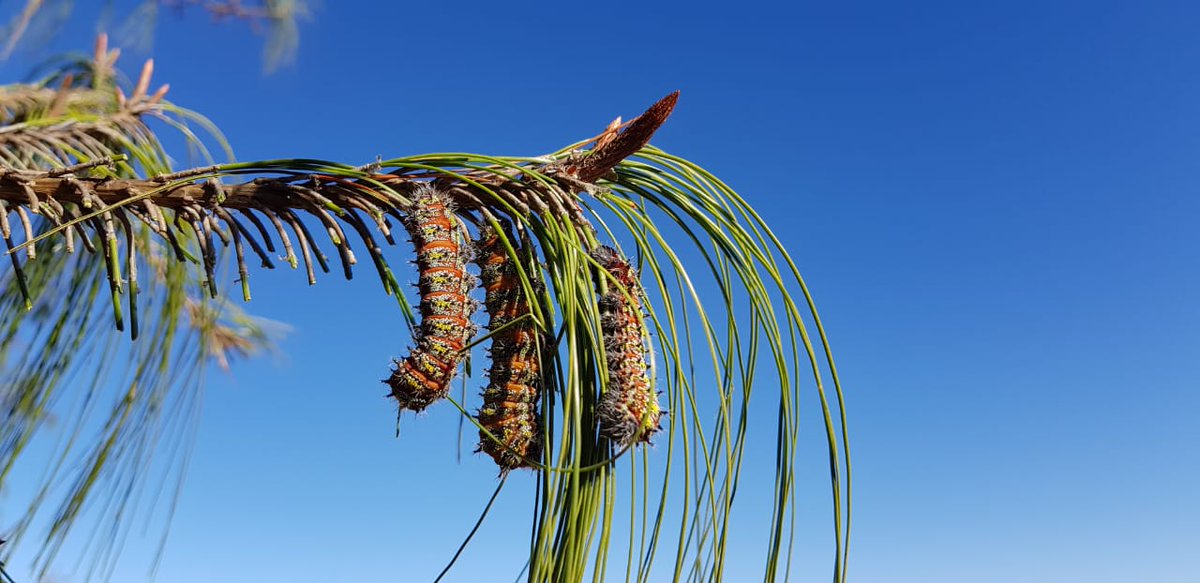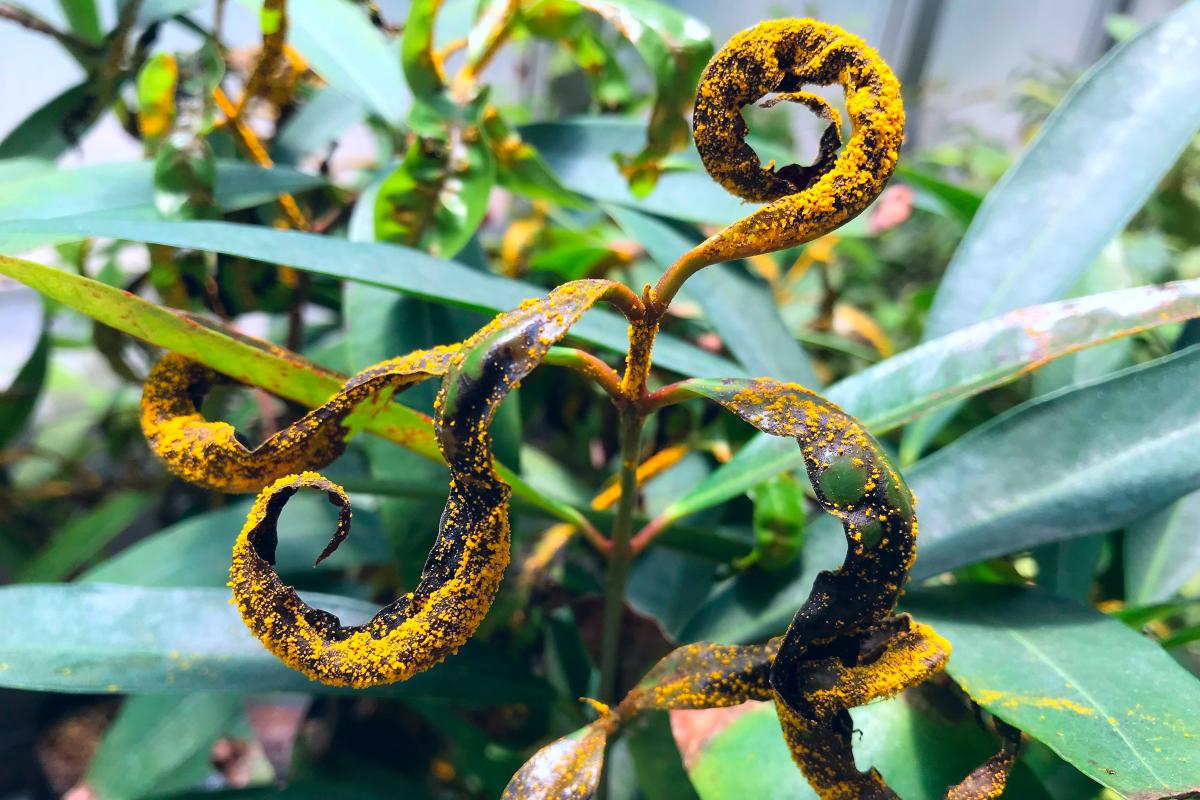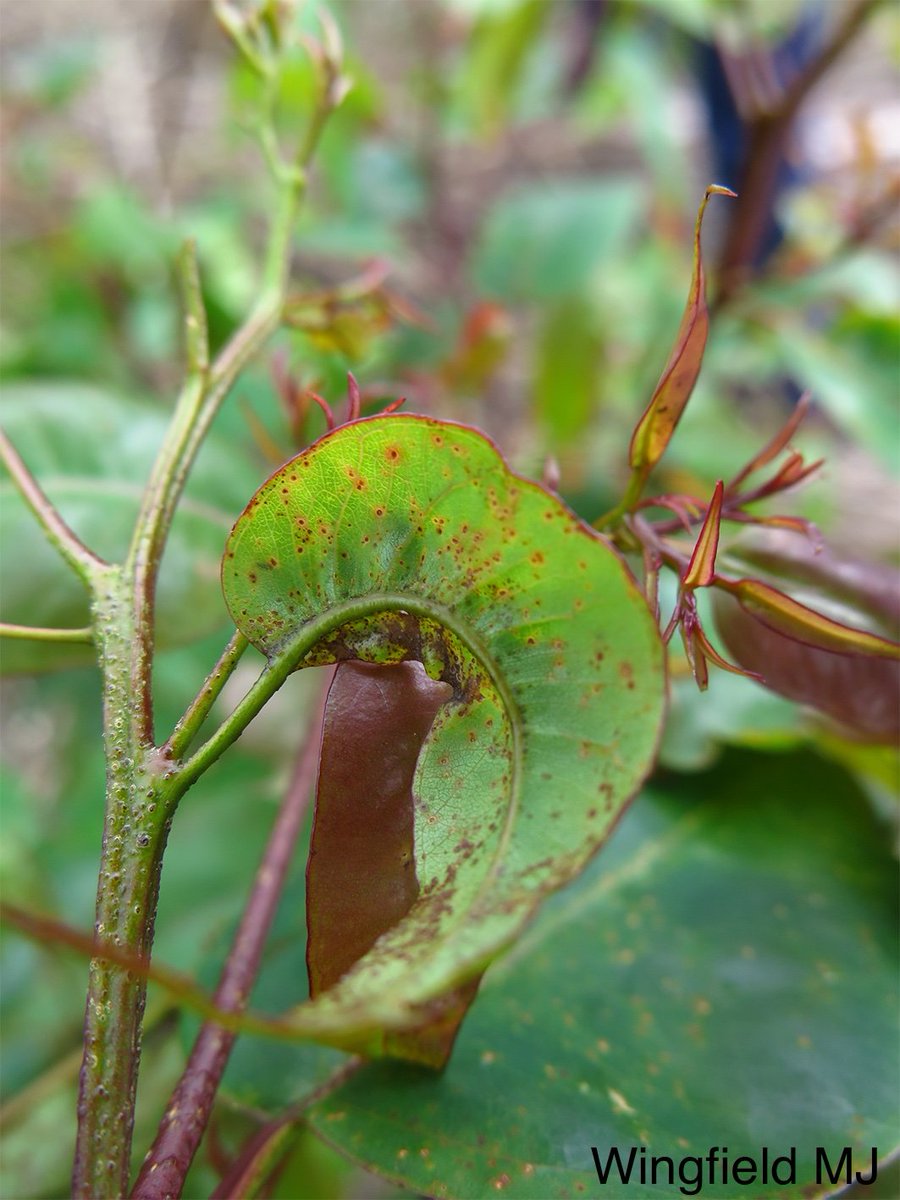
FABI
@Fabiteam1
Followers
3K
Following
3K
Media
859
Statuses
4K
Forestry and Agricultural Biotechnology Institute. A world-class African research and post-graduate training institute at @UPTuks
Pretoria, South Africa
Joined June 2013
🌱 Management strategies include planting resistant species like Pinus patula. Early detection and understanding its lifecycle are key to reducing the damage caused by this globally significant pine pathogen. #FABI #ForestResearch.
0
0
1
️Spores are spread by wind, rain and mist, and germinate in high humidity (12–18ºC). In tropical areas, infection can happen year-round, while in SA, spores overwinter and activate in favourable conditions. #ForestHealth.
1
0
0
🪵 The fungus causes red bands on pine needles due to a toxin called dothistromin. Black fruiting bodies emerge from dead tissue, leading to defoliation, stunted growth, and sometimes death of the tree. #PlantPathology
1
0
0
🌲 FABI Friday Feature.This week we’re highlighting Dothistroma needle blight, a destructive disease of Pinus species caused by the fungus Dothistroma septosporum. First reported in SA in 1965, it continues to challenge pine forestry. #FABIFriday #TreeHealth
1
1
4
🌲 First recorded in sketches as far back as 1896, this moth continues to remind us why entomological research and pest management remain key to forestry health. #Forestry #TreePests #SouthAfrica #FABI.
0
0
2
🪲 FABI Friday Feature.Meet Nudaurelia clarki – the Pine Emperor Moth. Native to southern Africa, this moth is both beautiful and destructive. Its larvae feed gregariously on pine needles, causing severe defoliation. #FABIFriday #Entomology
1
3
16
📣 Understanding A. psidii is key to managing its spread. Follow us for more on the science behind tree pathogens!.#MyrtleRust #PlantPathology #Forestry #Mycology #FABI #FungalFriday.
0
0
2
🌿 FABI Friday Feature.This week we spotlight Austropuccinia psidii – the rust fungus behind Myrtle Rust, a serious threat to Myrtaceae species. #FABIFriday
1
7
13
RT @cdewing47: Our paper is out! .🧫 #Pseudopithomyces toxicarius was identified - causal agent of facial eczema in 🐄 🌍.📊 Several other spec….
0
2
0
Origin?.Still uncertain — but suspected to be linked to regions where Eucalyptus is native (Australia and nearby islands). 📚 Ongoing research at FABI is working to better understand & manage this pathogen. #FABI #PlantHealth.
0
1
3
Where & when?.🌍 Found in Mpumalanga & KwaZulu-Natal.💧 Appears soon after rain.🌞 Trees recover during dry periods.🧬 Affects Eucalyptus species, especially in cooler, higher-altitude areas.#ForestrySouthAfrica.
1
1
2
The fungus:.🔬 Slow-growing colonies.Grows best at 25 °C.🧫 Produce orange to red-pigmented toxin on media.🧪 Still relatively unknown biologically.📍 First reported in in 2023.#FungalDisease
1
1
2
Severe infections cause:.⚠️ Girdled, distorted shoots.⚠️ Crinkled leaves.⚠️ Loss of apical dominance.⚠️ Epicormic shoots.⚠️ Eventual death of susceptible clones after repeated infections.#PlantPathology
1
1
1
















